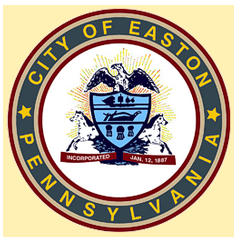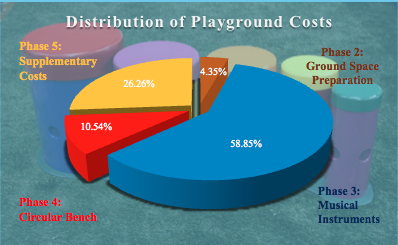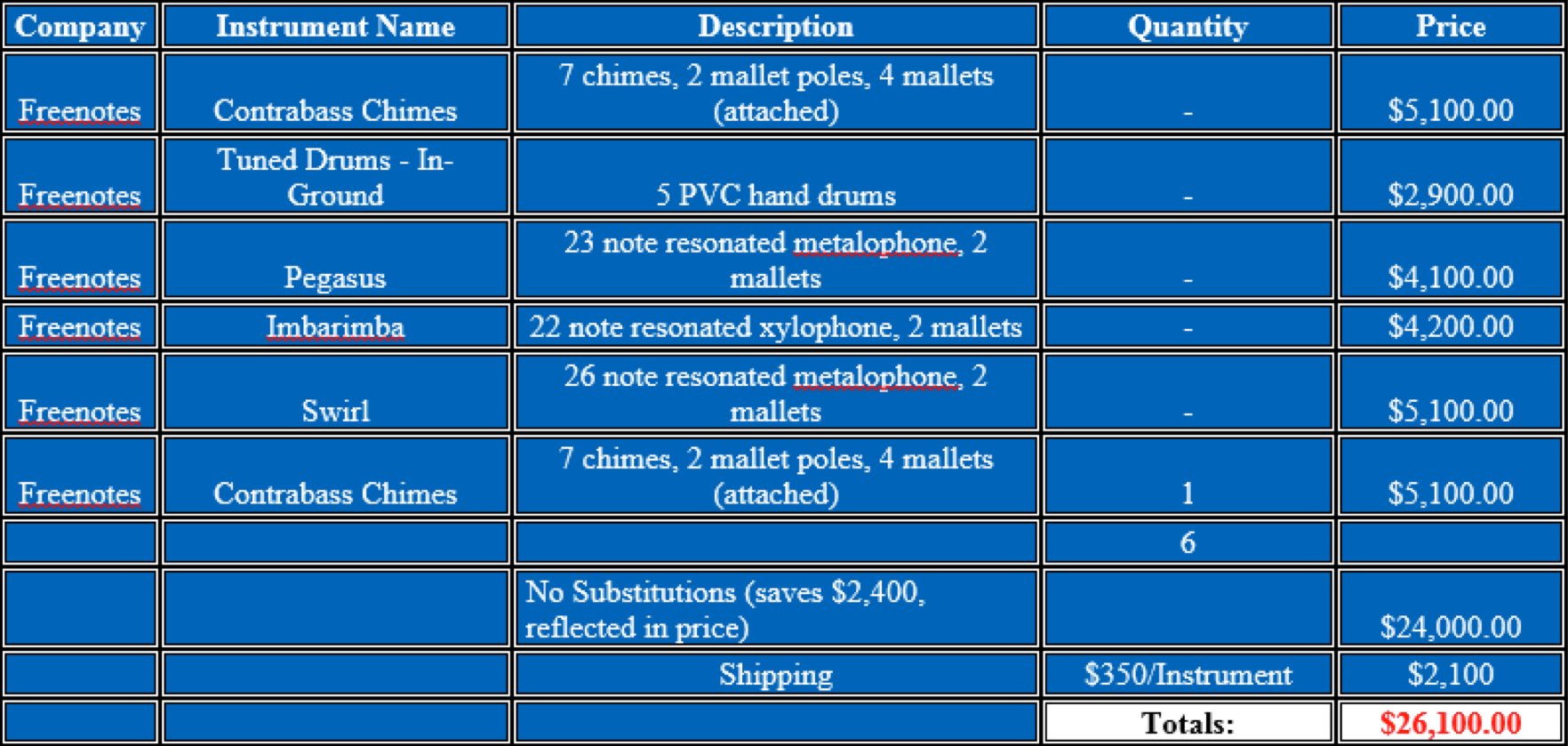Economic Analysis
The feasibility study culminates with an assessment of the economic context for the proposed musical playground as no project can come to fruition without examination of the monetary costs involved. Our economic analysis provides a detailed report of how much, financially speaking, a musical playground for the Karl Stirner Arts Trail will cost, while also evaluating the many steps needed to construct the plan we have proposed. From clearing the park space to the inclusion of finishing touches such as garbage receptacles, the economic study considers many aspects from the ground up to ensure future success. Most of the monetary costs will complement the information of the Technical Analysis, but the economic section is not just a monetary summation of the instruments. Our analysis, reflective of the costs of the included instruments and ‘technical’ items, also provides dialogue to validate the decisions made. By taking into account the purposes of the selected items and matching them with the goals of the KSAT board, and in regards to the other contextual analyses and available monies, this extra scope ensures a more complete study. As a result, beyond the fact of making sure the project’s goals are satisfied, the study highlights the most ideal musical playground for the KSAT and the community it will entertain.

Due to the generosity of the Easton Parks Department and the good relationship they have with the KSAT Board, there is $60,000 to $70,000 available to construct the playground. The Easton Parks Department has access to $30,000 to $35,000 left over from past projects. They are willing to designate these funds for the musical playground project depending on how much will be matched by the Lafayette community. Ideally, a Lafayette College alumni would be the best option to receive the optimal amount, but this money can be funded through organizations or departments willing to add to the budget for it. The money will cover everything from the site preparation of the area to purchasing appropriate ground covering and securing sufficient cement mixture for the instruments. As the Engineering Studies 480: Sustainable Solutions spring 2016 class will construct the musical playground, the cost of clearing the space is minimal to none. As such, the majority of the money is to be spent on the purchasing and shipping of the instruments, allowing for a larger and more diverse arrangement.

As shown in Figure 35, and subsequently broken down below, costs were divided into 5 major phases.
Phase 1: Clearing of Park Space
Phase 1 is not displayed in the chart as a monetary cost since the Sustainable Solutions class will provide the installation service themselves, and therefore, no fees are anticipated. Should an unanticipated cost arise, the needed funds can be taken from the Phase 5: Supplementary Costs portion of the budget, which was designed to include extra funds for any unanticipated financial costs. Lafayette College’s aid is represented in this phase through their commitment to establishing a successful, feasible musical playground by incorporating the construction of the instruments into the curriculum of one of their courses. This, in addition, provides less fees in terms of outsourcing the service to a third party. Participation in the class will also supply the students with a hands-on experience from which to learn and build for their own personal goals, showing that the project incorporates more than just providing a playground for children in the community
Phase 2: Ground Space Preparation

Phase 2 consists of preparing the ground space for construction. More information on the intricacies of setting the instruments up is found in the Technical Analysis. As the cement is used to anchor the instruments in the ground, enough is required to make sure each instrument is installed firmly. Cost for the compressed stones will vary depending on how far the trucks must travel from the quarry to the site location, but the price per ton tends to decrease if more than 23 tons are being purchased. Phase 2 costs close out with the totals for the reversible border timber and stakes, cost of shipping included. The items in Phase 2 take into account the recommendations of Steve Hemler at General Recreations, such as compressed stones over bonded mulch, which result in a reduced cost and better choice of ground material for the functionality of this type of playground.
Phase 3: Musical Instruments

In Phase 3 the total cost of purchasing and shipping the main components of the musical playground are broken down. After much tinkering and discussions surrounding other set ups, products, and companies, we felt the Premium Ensemble from Freenotes Harmony Park provided the most economically fit instruments that were also musically sound and aesthetically pleasing. We choose the Premium Ensemble because of the variety of instruments procured and the discount that comes along with the purchase of the package. A total of $2,400 is saved when choosing the specified ensemble over purchasing the instruments separately. Although the instruments will be sold to us through General Recreation, the instruments will ship directly from the manufacturer in Colorado. A firm shipping estimate will have to be procured when everything is ready for the instruments, but Steve Hemler at General Recreation gave a $350 estimate on how much it would cost to ship each instrument via freight from Colorado.
Phase 4: Circular Bench

Although displaying only one item, Phase 4 included a proposal to sufficiently address the problem of civic space along the trail. We decided that a circular bench, placed right in the middle of the playground, would be a great addition as it will allow for those sitting on the bench to observe players using any of the instruments. Belson provides a steel frame, 360 degree bench that children and patrons of the KSAT can sit and relax on while still appreciating the environment and sounds of the playground and trail. Due to the adequate, yet not overly large, area where the musical playground will be installed, the smaller of the two bench sizes was chosen, which contributed to keeping costs down.
Phase 5: Supplementary Costs

Rounding out the last stage, Phase 5 includes supplementary aspects of the playground that were considered in regards to the goals of aesthetics and civic space. Belson, the company selling the circular bench, also provides a planter and trash receptacles in their inventory. The planter will be placed in the middle of the bench, as opposed to the trash receptacle residing in this area, to add to the aesthetics highlights achieved by the playground. In order to promote a clean environment for the users of the playground, Belson’s trash receptacle was also included in the economic study. In regards to supplemental labor costs that could occur in the construction of the project, we have allotted $10,000. Since our final projected expenditures of about $45,000 happens to fall below the allotted budget line given for the project, fluctuations in these miscellaneous costs should not affect the overall feasibility of the playground when considering the financial burden of the project.
Over time the musical playground will need some type of maintenance and potentially, replacement parts, although not enough to flag it as a future major issue that needs to be addressed immediately. Care of the instruments, which consists of wiping them down with soap and water if they are dirty, could be carried out by volunteer groups, several of which regularly pick up litter along the KSAT. Should an instrument or piece be broken, replacements can be purchased through the original manufacturer. This, obviously, would require a sum anywhere from $100 to $4,000, depending on the part of instrument being replaced. The most likely part to need replacing are the mallets, which are tethered to poles by nylon-coated steel cables. Anything, however, can be broken with persistence, especially if the playground becomes very popular. Since compressed stones will be used, weekly maintenance to address the ground space is not necessary, as opposed to a constant replacement every 2 to 3 years if mulch was used. As such, little to no regular maintenance is needed for the musical playground, and what maintenance is needed can be done based on when appropriate help is available.
To formally wrap up our feasibility study, this Economic Analysis is followed the Conclusion.
